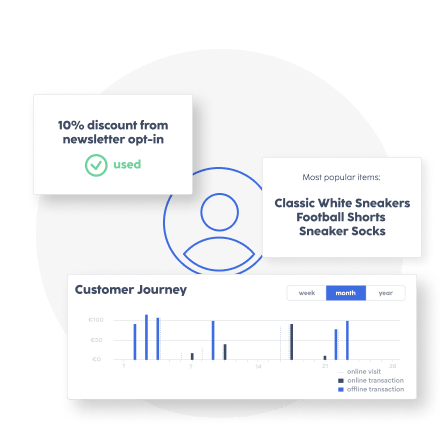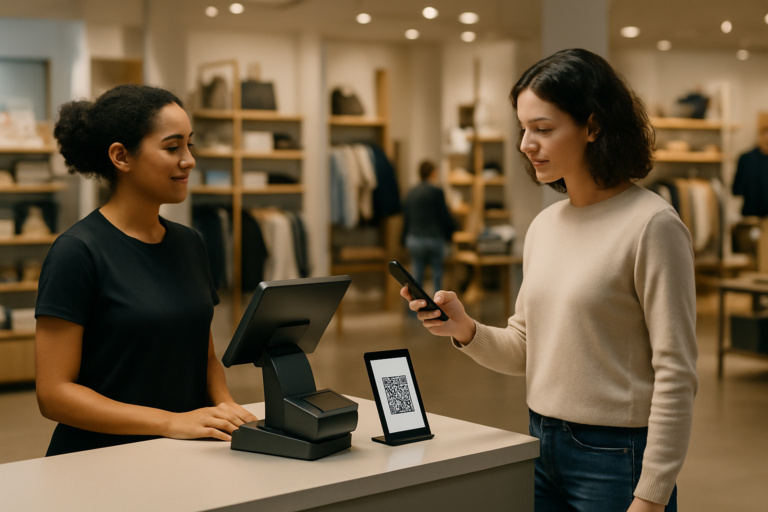In today’s retail ecosystem, understanding the entire customer journey with the help of omnichannel analytics is one of the hottest topics that almost every retail brand is learning about. The times when customers would just stop by and buy the product that is available in the store, without checking the online shop or social media, is over. The customer behaviour has changed and whatever customers see and experience online, they expect a similar experience with the same brand in-store.
A customer could be going through the shelves of your store, looking for a perfect pair of winter boots, while still checking out other options by reading reviews and making inquiries with their smartphone. If a competitor who understands this customer’s preferences flashes a better or more suitable offer, they may choose to buy the boots from them.
If you want your business to remain competitive in today’s data-driven world, you need to understand your customers’ preferences, predict their behaviour and be able to meet their needs. To accomplish this, you need to connect all your marketing and customer engagement channels and analyse the collected data to figure out how best to give your customers a seamless, personalised experience that will keep them loyal to your store.
This is why omnichannel analytics is a priority in this modern retail ecosystem.
What is omnichannel analytics?
interaction, behaviour, and preferences across all their engagement channels. It entails analysing such data to find ways to give customers a seamless, personalised experience at every point of the retail customer journey.
The ultimate aim of omnichannel analytics is to understand your customers’ needs and behaviour so that you can consistently provide them with a personalised experience. While many businesses have been able to collect and analyse data from their customer’s online experience, few have achieved the same with the in-store experience.
To get omnichannel analytics right, brands must be able to integrate in-store customer data with online customer data. This will give them the ability to make better predictions about changing customer preferences.
In this article, you will learn about the importance of omnichannel analytics and how businesses can do it well.
What are the benefits of omnichannel analytics?
A better understanding of customer behaviour
Using reliable customer analytics software can provide retailers with a holistic view of their customers. It can offer clear insight into the kind of product or service they want and how they want it. Unlike traditional analytic tools that just provide limited information about specific matrices such as bounce rate and time spent per page, omnichannel analytics tools give a 360-degree analysis of the customer interaction with a website, stores, and products.
Metrics include
- Website visits
- Page views
- Time spent per online session
- Email opens
- Online purchases
- In-store purchases
- In-store visits
- Product reviews
- Loyalty program status
- and more
Using all this data, brands get a broader view of their customers’ interests, preferences and behaviour, including the time of the day or location when they interact most across all of their channels.
Optimised marketing
The complete overview of your customers’ purchases includes both online and in-store transactions and enables organisations to accurately calculate the Customer Lifetime Value. This in turn improves understanding of their best customers, so they can more accurately target new potential customers.
Another way omnichannel analytics makes it possible to increase the impact of marketing efforts is by enabling better tracking of marketing ROI. Online ad campaigns can drive not only ecommerce sales but in-store sales too, and a good omnichannel analytics platform should make it possible to record offline conversions and thus calculate real return on investment for online ad spend. With improved marketing analytics, it is possible to identify and optimise the ads and promotions that are more effective across different channels.
Optimised Supply Chain
Complete omnichannel analytics support supply chain optimisation by enabling retailers to identify high-demand products and to ensure they are in stock across all channels. A better understanding of purchase patterns can help brands predict which products would enjoy higher demand in the nearest future and adjust their supply chain or delivery options accordingly.
Optimised Merchandising
In order to make better merchandising decisions, teams need a clear view of what customers are looking for. Knowing that different stores are visited by different customers, along with a deeper understanding of customer preferences, enables retailers to improve how products are presented in their stores.
Improved Store Operation
Store operation becomes more effective when it’s driven by insights of the customer’s journey to the point of purchase. There will also be a seamless communication with customers, better product placement and an easier optimisation of the staffing process.
The Challenge of Collecting Customer Data in Brick and Mortar Retail
The above-stated advantages will benefit every omnichannel retailer, but many businesses are unable to enjoy them because they don’t have the right data. Customer data analytics is simpler online because brands can collect data when prospects accept cookies on their website. Businesses can also track customer interactions on social media or email and find out what customers are searching for and the kinds of offers that pique their interest.
However, this isn’t the case with collecting in-store data. Many businesses do not even try to collect offline data, while others do not know the exact type of customer data to capture in their store.
A Google study showed that 80% of consumers who use smartphones pass through both online and offline channels before making a purchase. It is relevant here to consider Apple’s efforts to restrict data tracking on iOS devices and limit the collection of user data online. All these indicate that businesses need to ramp up their in-store customer data capture efforts, as it may become their only source of reliable data in the future.

Why Is It so Difficult to Connect Online Customer Data with Offline Customer Data?
Connecting online and offline customer data provides businesses a better understanding of each customer’s journey to purchase. The problem is that many businesses store offline data in a system which does not easily integrate with the customer data and analytics compiled online.
Hence, brands need an efficient integrated customer analytic software that allows them to collect, analyse and manage customer data from both online and offline sources.
How to Make Omnichannel Analytics Easy? With Smart Digital Receipts by refive
refive is a software which enables brick and mortar retailers to issue smart digital receipts from their existing POS. It is a frictionless solution to the in-store customer data capture challenge. The omnichannel analytics platform offers retail stores a detailed insight of their customer preferences and purchase behaviour online and in the physical store. It creates individual customer profiles that help businesses to provide a personalised experience for their shoppers.
Optimised Marketing – Online and Offline
With refive smart digital receipts, retailers have all the tools they need to make better marketing and ad-targeting decisions. The use of its omnichannel analytics offers powerful insights into customer behavior and preferences, enabling businesses to effectively enhance customer loyalty via targeted improvements.
This way, brands can have a more personalised interaction with customers, thus driving greater customer satisfaction and engagement.
This is a key strategy to stand out from the competition. Get started with refive smart receipts today, to get the insights you need to transform your business, boost customer loyalty and grow your profits.
Analyse customer behaviour across channels
Gain a comprehensive view of the customer purchase history and behaviour – online and offline.









